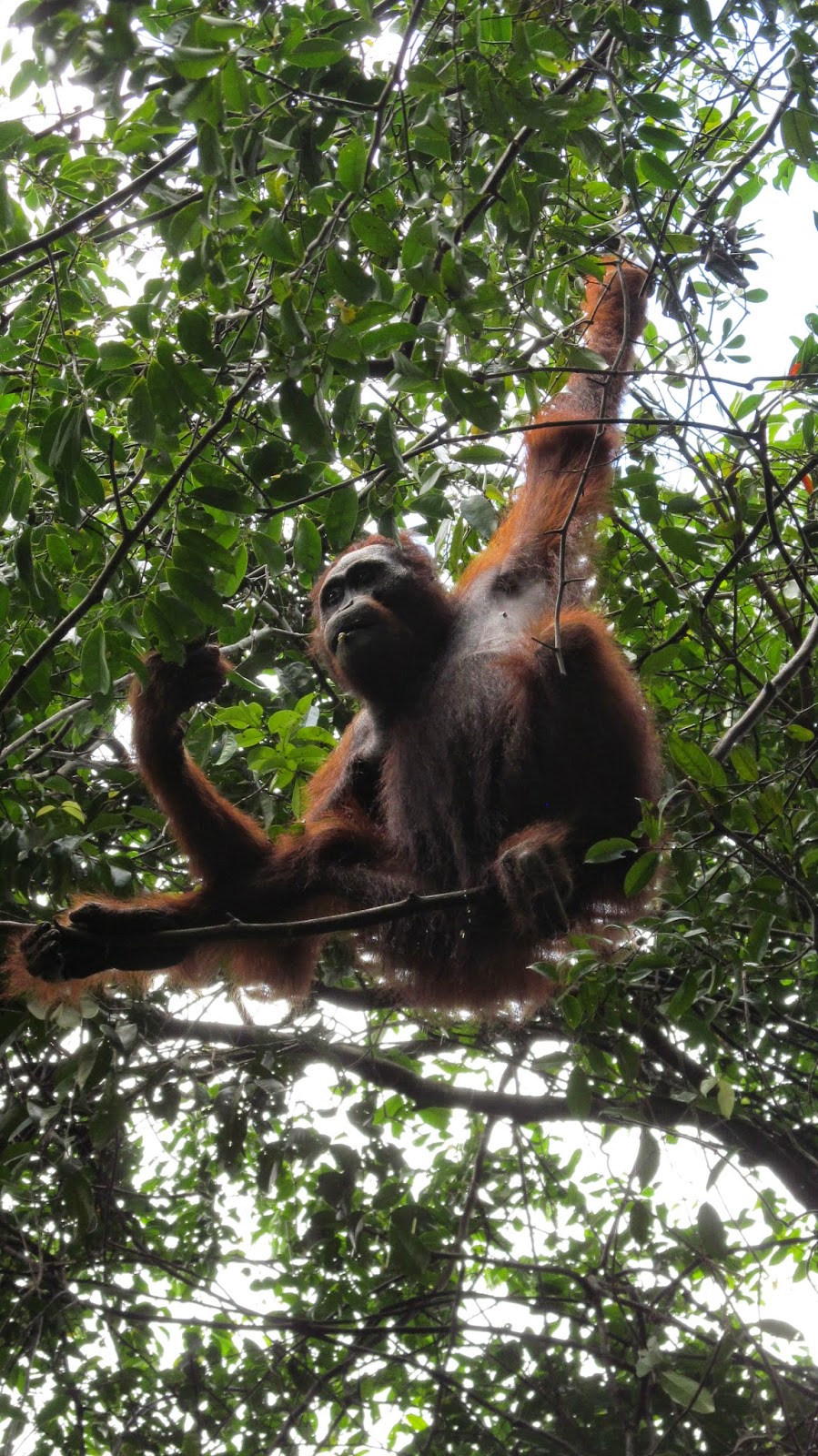 |
| Ulysses, an unflanged male. |
This past week I had the chance to go with two of the primate staff members, Uji & Unyil, on an orangutan follow, although it wasn’t the first time I’d seen them & in fact not the first time I met Ulysses. He’s been hanging around in the trees around camp for several days, making it pretty easy to find him in the morning.
 |
| Uji collecting urine samples. |
 |
| Forest lunch |
The pattern of primate research, after groups of apes have been habituated to human presence, is to first search for your subject. That involves teams of 2 or 3 people walking transects in the forest, stopping at frequent intervals and looking and listening for your target. There are three primate species studied here; orangs, gibbons and red langurs, the last being the most challenging to find in the forest. Orangutans tend not to move as far (except for young males), gibbons sing in the morning, so are a bit easier to locate, and red langurs - well, I’m not sure how people find them yet. They’re smaller and more secretive. Anyways, after you’ve found your apes, you follow them, which means that gibbon and langur staff may have to travel longer distances and move more often, while Ulysses lounged around within 50 meters of camp for over 5 hours, munching on leaves and occasionally moving over to a different tree. (Male orangutans will spend most of their time alone; another pair of staff members were following a mother and baby farther away from camp.)
 |
| Unyil watching Ulysses up in the trees. |
 |
| On the previous day, staff could watch Ulysses from a chair in camp, with a hot coffee from the kitchen. |
The routine is consistent; every 5 minutes record what your subject is doing and how far he’s moved, with his current GPS location. Collect urine and faeces samples (at this point I’d like to reiterate why I’m a forester - trees don’t poop).
So while it was a pretty easy day, I had an excuse to leave the follow at 11:00 am (office work in town). My co-workers had to stay and record everything Ulysses did until he made a nest for the night and settled down, which is typically close to dusk (5 or 5:30). Considering that the day started at 5 am to be in place under the sleeping tree Ulysses chose last night, it turns out to be a long haul. Staff members usually follow apes for 3 days in a row, after which they are assigned work in the nursery or on butterfly surveys, which is a more reasonable 7 hour day.
The best part of the day for me was getting to know Uji and Unyil better. Between the 5-minute data collection points there’s a lot of time to chat & joke. And that’s one of the critical parts of my job; to build strong relationships with the staff. So I’ll be going out on more follows and searches, collecting fruiting and flowering data for tree species, identifying butterflies, picking up litter fall from leaf traps and helping with the reforestation project. Which will all be very welcome breaks from the office work and administrative details that fill a lot of my typical day!


ah your life is so different from mine! It's like watching a television program on animals and forests, only you're living it every day. Nice hearing from you again Jennifer. - Carol
ReplyDelete